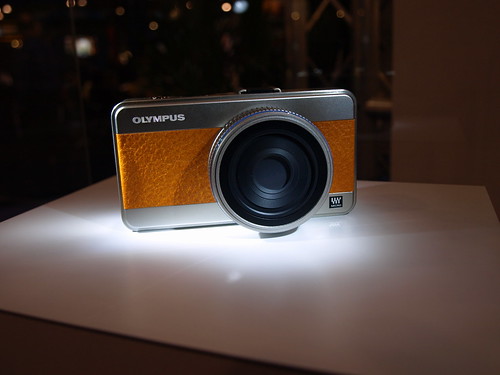Image may be NSFW.
Clik here to view.
Yesterday, I talked about changing camera systems if you were interested in Nikon, Canon or Sony. But what if you don’t want one of those? If you’re interested in Panasonic, Olympus or Pentax then this article is for you.
Panasonic
When was the last time that you heard an announcement about a Panasonic DSLR? It was probably a long time ago (speaking in terms of how fast the camera world moves.) Panasonic is a company that, at least these days, seems to be focusing more and more upon constantly improving their Micro 4/3rds lineup of cameras. That’s not the say that they’ve totally abandoned their support for 4/3rds.
However, it is safe to say that if one decides to switch to a Panasonic system, they are probably better off going with their Micro 4/3rds cameras because of the fact that the overall performance on these models vs. their DSLRs is much better. It is totally possible to build an entire system out of these cameras. The G1 is a nice little camera, but the GH1 is very highly regarded and praised in the photography world. Sure, it doesn’t have the low-light/high ISO performance that a Canon, Nikon or Pentax have but their pictures are still very usable in most situations and the GH1 has some of the best 1080p HD video out there of the “combocams,” as stated by Luminous Landscape.
A problem you may encounter is the fact that Panasonic takes the route that Nikon and Canon did with lenses: Image Stabilization in the lens rather than in the sensor. That means that you’ll be paying a more hefty premium for lenses. It’s not all bad though because Panasonic has something going with Leica. Affectionately coined, “Panaleica’s,” they’re probably the cheapest Leica lenses you will ever lay your hands on (in terms of price, not quality.)
Go to Panasonic if you want compactness, a wide range of lenses, and you care about video quality more than photo quality but still want a hybrid of some sort.
Olympus
I just left Olympus: my E-510 and lenses were all sold yesterday. That doesn’t mean that they don’t manufacture great cameras though: indeed they’re wonderful, but flawed in some cases. What Olympus has going for it is in fact smaller DSLRs than everyone else, smaller lenses, a 2x crop factor in the 4/3rds sensor (which means better zoom lenses), durability (I’ve dropped mine in snow, shaken it off and it continued to fire), development on both 4/3rds and Micro 4/3rds cameras and stabilization in the sensor.
They are good for travelers, soccer moms, wildlife shooters, sports shooters, amongst others that do their shooting in bright light. Artists may also be interested in Olympus’s new love for Art Filters in the E-30. The E-3 is right now being used up in space.
For the money though, Olympus cameras seem a bit pricey. 4/3rds sensors only allow for so many megapixels to be used to their full potential: which is why they try to cap it off at 12MP. Granted, 12MP is enough for most users: but Olympus reps at PhotoPlus claimed that you could put around 30MP on the sensor. Additionally, if you buy an Olympus camera don’t expect to be able to get the wide range of accessories that Canon or Nikon have.
If you choose to go with their EP-1 Micro 4/3rds camera, then you’ll have many more lenses available to you than what their 4/3rds system has.
Pentax
It’s only a matter of time before we see just how close the Samsung and Pentax collaboration gets. Samsung DSLRs are basically Pentax clones and can use Schneider lenses. Pentax was huge during the film days and so today Pentax digital users have a wide range of lenses that are available to them. Rumors are also abound that they may be releasing a full-frame camera of some sort.
Pentax’s are tough, beefy cameras but don’t come in the larger sizes that the Canon’s, Nikon’s, Sony’s or the higher grade Olympus cameras come in. They only use APS-C sized sensors and upon announcement the K-7 was a camera that many bloggers seemed to love for its toughness, HD video capabilities, fast shooting abilities, etc.
A camera like this seems to be taking on others like the Nikon D90 (it actually seems neck and neck in some aspects but in some ways the K7 is better). For the price, it’s a better buy. Somehow or another, Pentax has managed to put tough, reliable weather-sealing on the K-7 but isn’t charging an arm and a leg for the camera. If you travel and want a APS-C sized camera with good high ISO performance, access to nice primes and zoom lenses, and good HD video capabilities but are sick of Nikon and Canon then go for a Pentax.
Copyright/DMCA Notice: The RSS entry was originally published on Photography Bay. RSSID#794326